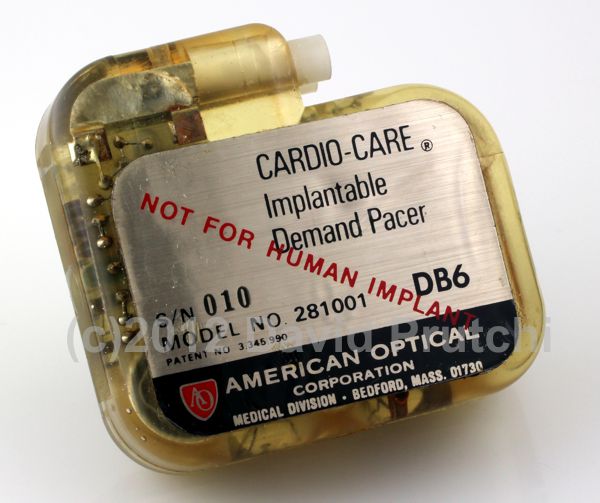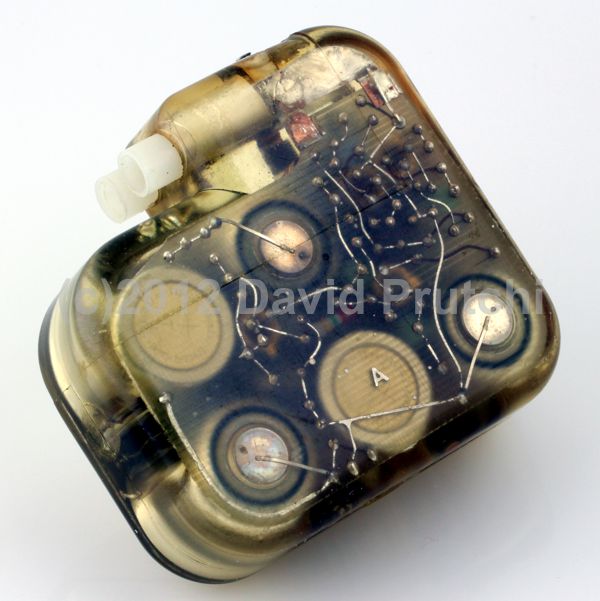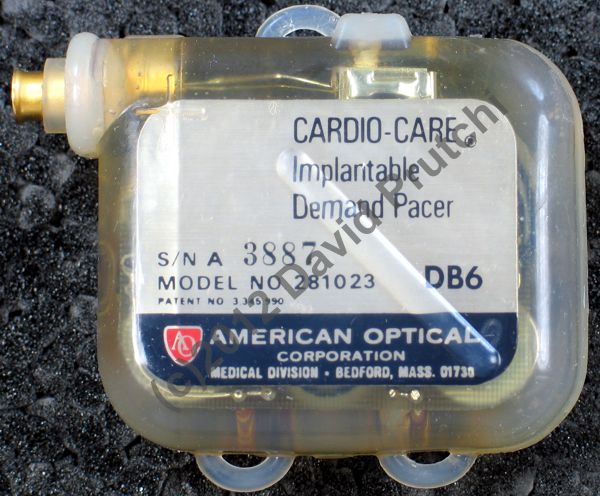
Barouh Berkovits at American Optical Co of Boston, MA designed the first “Demand Pacemaker” – what we now know as a VVI pacemaker. The Cardio-Care Demand Pacemaker, introduced in 1968, was American Optical’s first implantable device.
From Kirk Jeffrey’s Machines in our Hearts(2001):
“Berkovits in 1963 designed a sensing capability into the pacemaker. His invention behaved exactly like an asynchronous pacer until it detected a naturally occurring R wave, the indication of a ventricular contraction. This event would reset the timing circuit of the pacemaker, and the countdown to the next stimulus would begin anew. Thus the pacer stimulated the heart only when the ventricles failed to contract. It worked only ‘‘on demand.’’ As an added benefit, noncompetitive pacing extended the life of the battery.
…
Despite the broad patent awarded to Berkovits in 1967, several other manufacturers announced new models designed to avoid competition with the heart’s own electrical impulses. By 1969, noncompetitive pacemakers had almost completely superseded the earlier asynchronous models.
…
Early in 1974, Medtronic settled with AO out of court. Medtronic conceded the validity of the Berkovits patent; AO gave permission for Medtronic to manufacture and sell noncompetitive pacemakers under license through the life of the patent. Medtronic paid $1.78 million in licensing fees it had been withholding for 1973 and 1974. The parties also worked out a payment schedule through 1985, when the patent would expire: Medtronic would pay fees that rose every three years from $550,000 in 1974–76 to $850,000 in 1983–85.63 Subsequently, American Optical licensed the technology to almost all manufacturers in the United States and abroad. AO itself never gained a significant market share in pacemakers.
American Optical withdrew from the pacing industry in1975, Barouh Berkovits moved to Medtronic on condition that the company develop and aggressively market a dual-chamber product.”


AO Cardio-Care Implantable Demand Pacemaker from Paul Spehr's Collection
